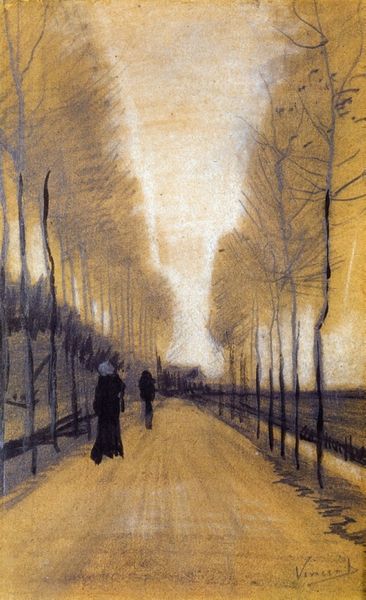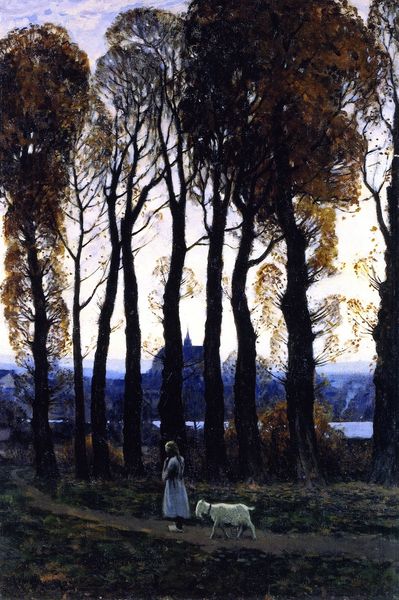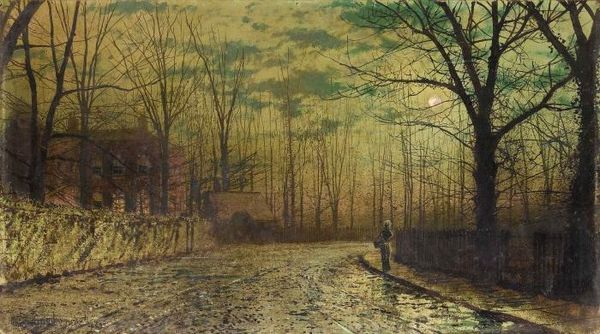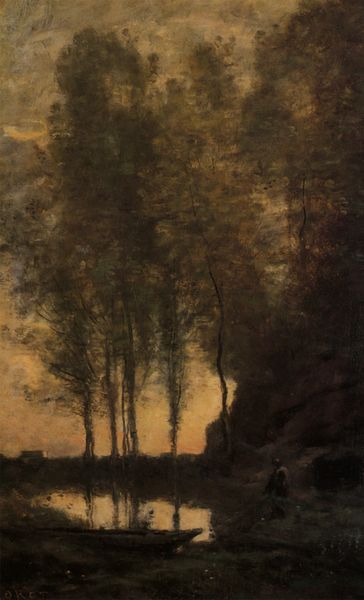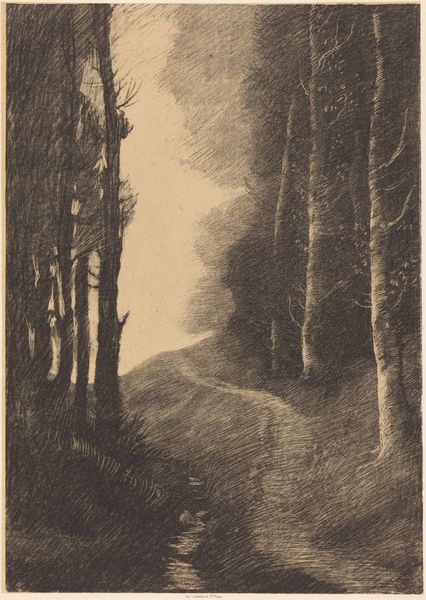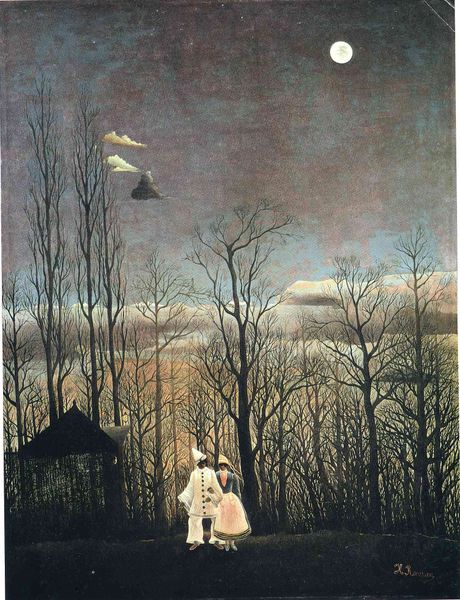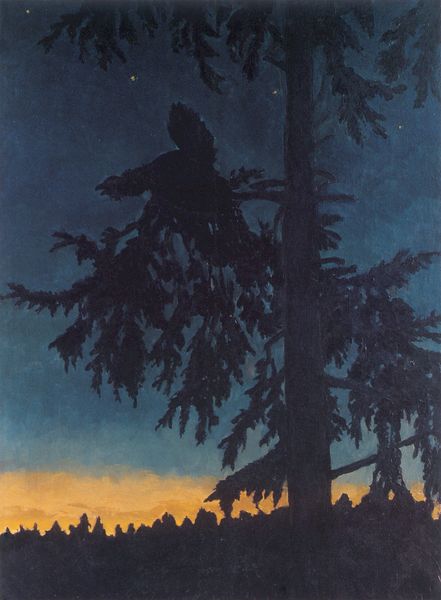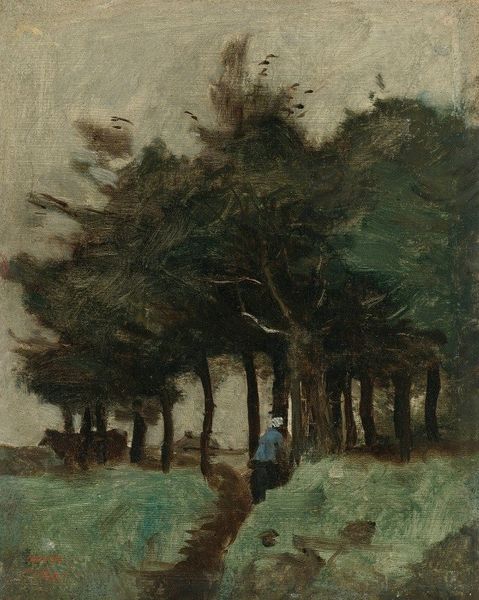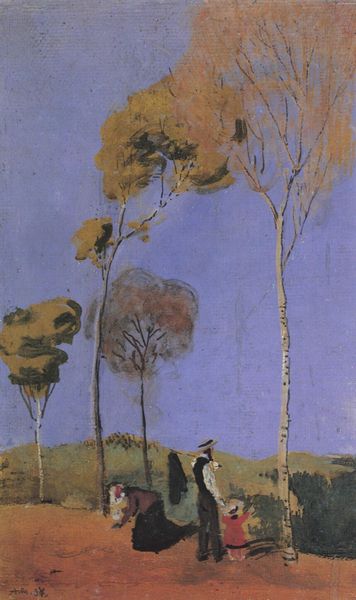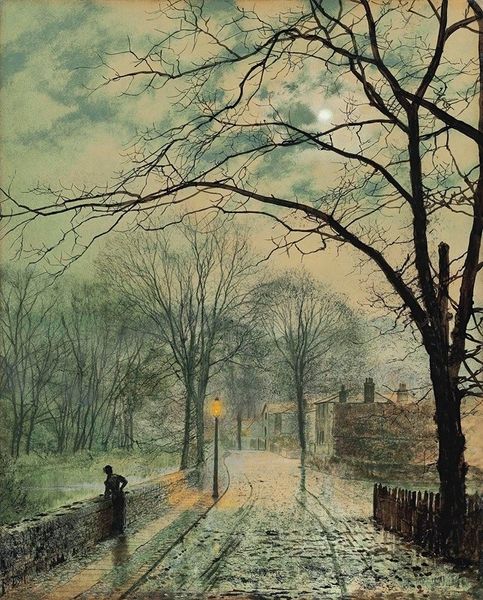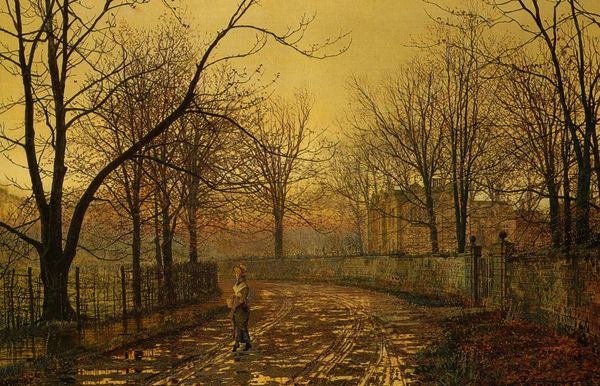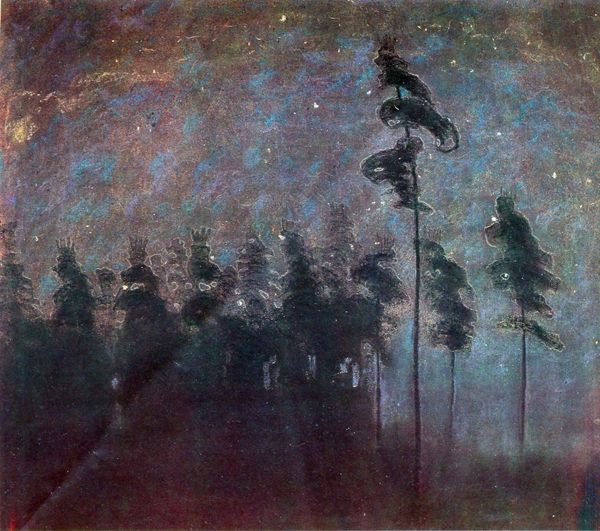
Copyright: Public domain
Editor: This is Van Gogh's "Avenue of Poplars at Sunset," painted in 1884. It’s an oil painting, and the composition really strikes me—the way the trees form almost a tunnel, leading to that brilliant sunset. It's quite melancholic, though. What do you make of it? Curator: Well, placing it in its socio-historical context is key. This was painted during a period of significant industrial and social change. Van Gogh, although not overtly political, was acutely aware of the shift from rural to urban life. Consider the stark, almost regimented, avenue of poplars. Could it be seen as symbolic of the rigid structures emerging in society at the time? Editor: That’s a really interesting take. I hadn’t thought of it that way. I was more focused on the romanticism of the sunset. Curator: And that romantic element is definitely there. But romanticism itself, especially in painting, was often a reaction against the very societal shifts I mentioned. Van Gogh’s artistic project must have involved engaging with societal issues as well. The placement of this work matters too—where was it exhibited? How was it received by critics at the time? That reveals its initial place within the art world’s structure of validation. Editor: Good point. It makes me wonder about Van Gogh's relationship to the established art institutions of his time. Curator: Precisely. The art market and the academic system greatly impacted artists’ careers, often forcing them to cater to certain tastes or be marginalized. How do you think his style, particularly in this early work, fits within that system? Does it seem like an attempt to conform, or is it already a form of resistance? Editor: It’s definitely more of a departure. Seeing it as a commentary on industrialization adds a whole new dimension. Curator: And that dimension shapes its enduring appeal, don't you think? Art is never created in a vacuum, and neither is its reception. It always matters where and when the art enters public space. Editor: Absolutely. Considering the social context really enriches the viewing experience. I'll remember that.
Comments
No comments
Be the first to comment and join the conversation on the ultimate creative platform.
